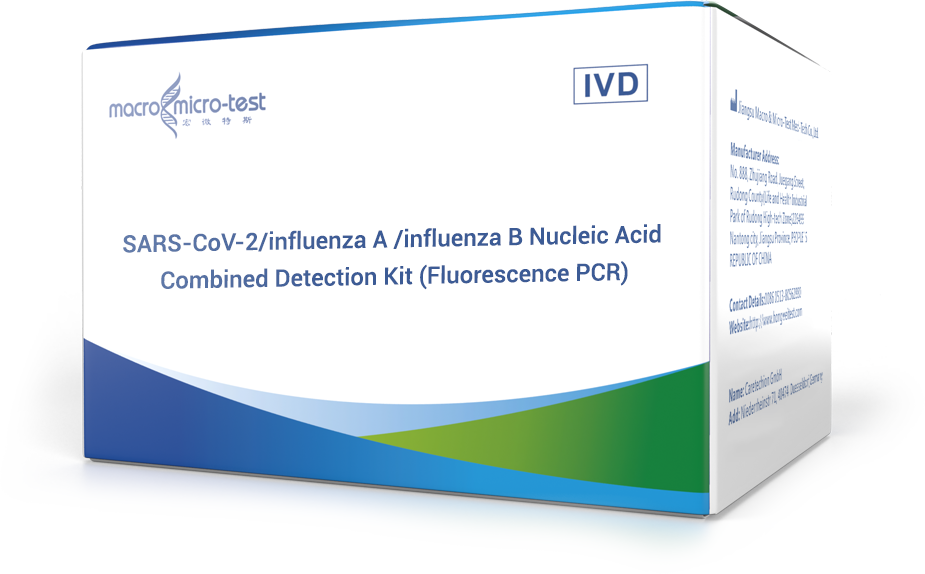Covid-19 (2019-nCoV) has caused hundreds of millions of infections and millions of deaths since its outbreak at the end of 2019, making it a global health emergency. The World Health Organization (WHO) put forward five "mutant strains of concern" [1], namely Alpha, Beta, Gamma, Delta and Omicron, and Omicron mutant strain is the dominant strain in the global epidemic at present. After being infected with Omicron mutant, the symptoms are relatively mild, but for special people such as immunocompromised people, the elderly, chronic diseases and children, the risk of serious illness or even death after infection is still high. The case fatality rate of mutant strains in Omicron, real world data show that the average case fatality rate is about 0.75%, which is about 7 to 8 times that of influenza, and the case fatality rate of elderly people, especially those over 80 years old, exceeds 10%, which is nearly 100 times that of common influenza [2]. The common clinical manifestations of infection are fever, cough, dry throat, sore throat, myalgia, etc. Severe patients may have dyspnea and/or hypoxemia.
There are four types of influenza viruses: A, B, C and D. The main epidemic types are subtype A (H1N1) and H3N2, and strain B (Victoria and Yamagata). Influenza caused by influenza virus will cause seasonal epidemic and unpredictable pandemic every year, with a high incidence rate. According to statistics, about 3.4 million cases are treated for influenza-like diseases every year [3], and about 88,100 cases of influenza-related respiratory diseases lead to death, accounting for 8.2% of respiratory diseases deaths [4]. Clinical symptoms include fever, headache, myalgia and dry cough. High-risk groups, such as pregnant women, infants, the elderly and patients with chronic diseases, are prone to pneumonia and other complications, which may lead to death in severe cases.
1 COVID-19 with influenza hazards.
Co-infection of influenza with COVID-19 may aggravate the impact of the disease. A British study shows that [5], compared with COVID-19 infection alone, the risk of mechanical ventilation and the risk of hospital death in COVID-19 patients with influenza virus infection increased by 4.14 times and 2.35 times.
Tongji Medical College of Huazhong University of Science and Technology published a study [6], which included 95 studies involving 62,107 patients in COVID-19. The prevalence rate of influenza virus co-infection was 2.45%, among which influenza A accounted for a relatively high proportion. Compared with patients only infected with COVID-19, patients co-infected with influenza A have a significantly higher risk of severe outcomes, including ICU admission, mechanical ventilation support and death. Although the prevalence of co-infection is low, patients with co-infection face higher risk of serious consequences.
A meta-analysis shows that [7], compared with B-stream, A-stream is more likely to be co-infected with COVID-19. Among 143 co-infected patients, 74% are infected with A-stream, and 20% are infected with B-stream. Co-infection may lead to more serious illness of patients, especially among vulnerable groups such as children.
The research on children and adolescents under the age of 18 who were hospitalized or died of influenza during the flu season in the United States in 2021-22 found [8] that the phenomenon of co-infection with influenza in COVID-19 deserves attention. Among influenza-related hospitalization cases, 6% were co-infected with COVID-19 and influenza, and the proportion of influenza-related deaths rose to 16%. This finding suggests that patients who are co-infected with COVID-19 and influenza need invasive and non-invasive respiratory support more than those who are only infected with influenza, and points out that co-infection may lead to more serious disease risk in children.
2 Differential diagnosis of influenza and COVID-19.
Both new diseases and influenza are highly contagious, and there are similarities in some clinical symptoms, such as fever, cough and myalgia. However, the treatment schemes for these two viruses are different, and the antiviral drugs used are different. During the treatment, drugs may change the typical clinical manifestations of the disease, making it more difficult to diagnose the disease only by symptoms. Therefore, accurate diagnosis of COVID-19 and influenza needs to rely on virus differential detection to ensure that patients can receive appropriate and effective treatment.
A number of consensus recommendations on diagnosis and treatment suggest that accurate identification of COVID-19 and influenza virus through laboratory tests is very important for formulating a reasonable treatment plan.
《Influenza Diagnosis and Treatment Plan (2020 Edition) 》 [9] and 《Adult Influenza Diagnosis and Treatment Standard Emergency Expert Consensus (2022 Edition) 》 [10] all make it clear that influenza is similar to some diseases in COVID-19, and COVID-19 has mild and common symptoms such as fever, dry cough and sore throat, which is not easy to distinguish from influenza; Severe and critical manifestations include severe pneumonia, acute respiratory distress syndrome and organ dysfunction, which are similar to the clinical manifestations of severe and critical influenza, and need to be differentiated by etiology.
《novel coronavirus infection diagnosis and treatment plan (tenth edition for trial implementation》 [11] mentioned that Covid-19 infection should be differentiated from upper respiratory tract infection caused by other viruses.
3 Differences in treatment of influenza and COVID-19 infection
2019-nCoV and influenza are different diseases caused by different viruses, and the treatment methods are different. Proper use of antiviral drugs can inhibit the serious complications and death risk of the two diseases.
It is recommended to use small molecular antiviral drugs such as Nimatvir/Ritonavir, Azvudine, Monola and neutralizing antibody drugs such as Ambaviruzumab/Romisvir monoclonal antibody injection in COVID-19 [12].
Anti-influenza drugs mainly use neuraminidase inhibitors (oseltamivir, zanamivir), hemagglutinin inhibitors (Abidor) and RNA polymerase inhibitors (Mabaloxavir), which have good effects on the current popular influenza A and B viruses [13].
Choosing an appropriate antiviral regimen is very important for the treatment of 2019-nCoV and influenza. Therefore, it is very important to identify the pathogen clearly to guide clinical medication.
4 COVID-19/ Influenza A / Influenza B triple joint inspection nucleic acid products
This product provides rapid and accurate identification of 2019-nCoV, influenza A and influenza B viruses, and helps to distinguish 2019-nCoV and influenza, two respiratory infectious diseases with similar clinical symptoms but different treatment strategies. By identifying the pathogen, it can guide the clinical development of targeted treatment programs and ensure that patients can get appropriate treatment in time.
Total solution:
Sample collection--Nucleic acid extraction--Detection reagent--polymerase chain reaction
 Accurate identification: identify Covid-19 (ORF1ab, N), influenza A virus and influenza B virus in one tube.
Accurate identification: identify Covid-19 (ORF1ab, N), influenza A virus and influenza B virus in one tube.
Highly sensitive: LOD of Covid-19 is 300 copies/mL, and that of influenza A and B viruses is 500 copies/mL.
Comprehensive coverage: Covid-19 includes all known mutant strains, with influenza A including seasonal H1N1, H3N2, H1N1 2009, H5N1, H7N9, etc., and influenza B including Victoria and Yamagata strains, so as to ensure that there will be no missed detection.
Reliable quality control: built-in negative/positive control, internal reference and UDG enzyme four-fold quality control, monitoring reagents and operations to ensure accurate results.
Widely used: compatible with the mainstream four-channel fluorescence PCR instrument in the market.
Automatic extraction: with Macro & Micro-Test automatic nucleic acid extraction system and extraction reagents, the work efficiency and the consistency of results are improved.
Product information
References
1. World Health Orgainzation. Tracking SARS‑CoV‑2 variants[EB/OL]. (2022‑12‑01) [2023‑01‑08]. https://www. who.int/activities/tracking‑SARS‑CoV‑2‑variants.
2. Authoritative Interpretation _ Liang Wannian: The mortality rate in Omicron is 7 to 8 times that of the flu _ Influenza _ Epidemic _ Mick _ Sina News.http://k.sina.com.cn/article_3121600265_ba0fd7090010198ol.html.
3. Feng LZ, Feng S, Chen T, et al. Burden of influenza-associated outpatient influenza-like illness consultations in China, 2006-2015: a population-based study[J]. Influenza Other Respir Viruses, 2020, 14(2): 162-172.
4. Li L, Liu YN, Wu P, et al. Influenza-associated excess respiratory mortality in China, 2010-15: a population-based study[J]. Lancet Public Health, 2019, 4(9): e473-e481.
5. Swets MC, Russell CD, Harrison EM, et al. SARS-CoV-2 co-infection with influenza viruses, respiratory syncytial virus, or adenoviruses. Lancet. 2022; 399(10334):1463-1464.
6. Yan X, Li K, Lei Z, Luo J, Wang Q, Wei S. Prevalence and associated outcomes of coinfection between SARS-CoV-2 and influenza: a systematic review and meta-analysis. Int J Infect Dis. 2023; 136:29-36.
7. Dao TL, Hoang VT, Colson P, Million M, Gautret P. Co-infection of SARS-CoV-2 and influenza viruses: A systematic review and meta-analysis. J Clin Virol Plus. 2021 Sep; 1(3):100036.
8. Adams K, Tastad KJ, Huang S, et al. Prevalence of SARS-CoV-2 and Influenza Coinfection and Clinical Characteristics Among Children and Adolescents Aged <18 Years Who Were Hospital ized or Died with Influenza - United States, 2021-22 Influenza Season. MMWR Morb Mortal Wkly Rep. 2022; 71(50):1589-1596.
9. National Health and Wellness Committee of People's Republic of China (PRC), state administration of traditional chinese medicine. Influenza Diagnosis and Treatment Program (2020 Edition) [J]. Chinese Journal of Clinical Infectious Diseases, 2020, 13(6): 401-405,411.
10. Emergency Physician Branch of Chinese Medical Association, Emergency Medicine Branch of Chinese Medical Association, China Emergency Medical Association, Beijing Emergency Medical Association, China People's Liberation Army Emergency Medicine Professional Committee. Consensus of Emergency Experts on Adult Influenza Diagnosis and Treatment (2022 Edition) [J]. chinese journal of critical care medicine, 2022, 42(12): 1013-1026.
11. General Office of the State Health and Wellness Commission, General Department of the State Administration of Traditional Chinese Medicine. Notice on Printing and Distributing the novel coronavirus Infection Diagnosis and Treatment Plan (Trial Tenth Edition).
12. Zhang Fujie, Zhuo Wang, Wang Quanhong, et al. Expert consensus on antiviral therapy for novel coronavirus infected people [J]. Chinese Journal of Clinical Infectious Diseases, 2023, 16(1): 10-20.
13. Emergency Physician Branch of Chinese Medical Association, Emergency Medicine Branch of Chinese Medical Association, China Emergency Medical Association, Beijing Emergency Medical Association, China People's Liberation Army Emergency Medicine Professional Committee. Consensus of Emergency Experts on Adult Influenza Diagnosis and Treatment (2022 Edition) [J]. chinese journal of critical care medicine, 2022, 42(12): 1013-1026.
Post time: Mar-29-2024
